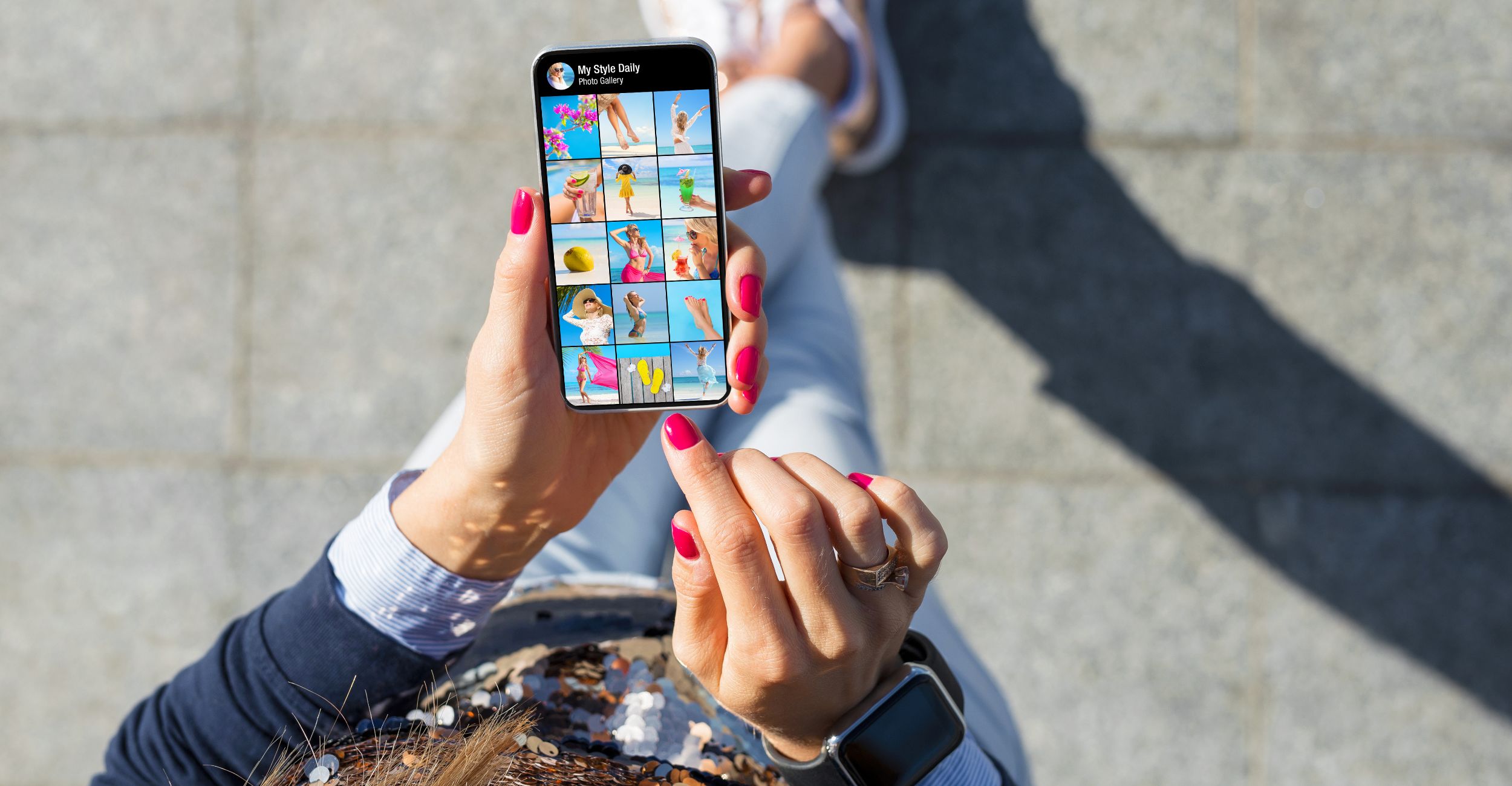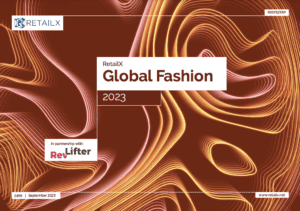In recent years, Google search has slipped from being the leading way in which shoppers of fashion and everything else sought inspiration, to being replaced by Instagram and Facebook, according to the RetailX Global Fashion 2023 report.
It found 52.4% of global fashion eshoppers now use Instagram, 51.6% Facebook and 49.8% Google search in RetailX’s data. Social sites YouTube (41.2%) and TikTok (28.1%) make up the rest of the top five, clearly demonstrating social media’s position as a key discovery channel in fashion.
Fashion and social media have long made for natural bedfellows. The visual and somewhat boastful nature of social media, combined with the growing role of influencers and the rise of social commerce, continue to cement the two industries together, each driving the other on. Social commerce, for example, is predicted to grow at an extraordinary rate between now and 2030, worth $913bn in 2023 but potentially hitting a staggering $4,745bn by the end of the decade.
The influence of social
This rise in social commerce is spurred on by influencer culture, which plays a growing role in how shoppers are inspired – and do the inspiring – across fashion and general retail. Around the world, the majority of consumers in all regions say they are somewhat likely to make purchases recommended by an influencer, with around 40% in all regions doing so.
Brazil bucks the trend, with almost half of all consumers here saying they are very likely to purchase based on social media influencers. Brazil is recognised as one of the most social media-led markets in the world, having slowly and steadily built up a strong ecosystem of content creators and influencers made up of both celebrities and these same content creators. As mobile internet and smartphone use has exploded in the country, these influencers have become the main way in which Brazilians seek inspiration, particularly in fashion.
Social media in China has also led to a staggering rise in social commerce. Here, consumers aren’t so driven by influencers but more through ‘super apps’ that combine messaging, social, commerce and payments and that form the bedrock of mobile commerce among younger Chinese consumers.
Some 71% of Chinese shoppers now use social media to buy clothing, 60% to shop for bags and shoes and 46% for fashion accessories. Along with food, snacks and cosmetics, social commerce is now central to fashion ecommerce in China.
How online advertising pays
There has been a huge swing towards social media influencers, super apps and social commerce to drive online fashion retail globally, online advertising continues to play a potent role.
While the impact online advertising has on driving fashion sales is less pronounced than social media influence, it remains significant. The bulk of this impact occurs across a longer time frame than social media influence, with around a quarter of the world’s online fashion shoppers being persuaded to buy something after seeing an ad every week, compared to a similar level of those doing so monthly and just a few times a year.
This is indicative of the impact of more traditional advertising being perhaps more subtle than social and is more akin to the impact advertising has on general ecommerce shoppers. Online advertising is, like all advertising, often a more subliminal sell, with shoppers buying due to a more subconscious push based on brand familiarity seen earlier in an ad.
However, Brazil again bucks the trend. Here, 45% of consumers say that online advertising leads them to make daily purchases, with a further 30% inspired by ads to make weekly purchases. Again, this is the result of the mass market in Brazil coming relatively late to the internet – through a surge of mobile use – seeing online advertising having a similarly disproportionate impact on shopping habits to social media influencers.
This feature was authored by Paul Skeldon, and originally appeared in the RetailX Global Fashion 2023 report.
Download the full report to take an in-depth look into consumer behaviour, whilst discovering how consumers are increasingly looking for more sustainable fashion, which is creating new sales options for brands.


